A truly gut-wrenching thought is that when you suspect you have a spun bearing inside your engine. The worst part of this is that it’s not just exclusive to one type of engine, this can happen in a standard stock engine, race engine, gas engine or diesel engine. The occurrence of a spun bearing doesn’t mean that the problem is isolated. This is because more times than not a spun bearing seizes itself around the crankshaft journal. A spun bearing can happen in a couple places. For instance, a spun rod bearing which tends to be the most common. A spun rod bearing will ruin the big end bore in the rod, damage the rod journal on the crankshaft, and occasionally, ruin the connecting rod.
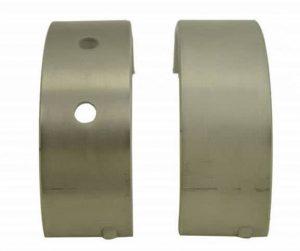
Now this is far from ideal due to the fact that a broken rod being thrown around inside an engine can and will usually cause some collateral damage. A spun main bearing on the other hand will tear up the main bore in the block but usually it will not cause the crank to fail. Fortunately, in this case, the damage should not go any further than the main journal surface on the crank and the main bore housing. A spun cam bearing will damage the bearing bore in the block (or head in the instance of an OHC cam), and maybe snap a timing belt or chain which then could lead in one or numerous bent valves if it’s an interference engine. But if you’re really unlucky, the cam bearing seizure could even snap the cam.
What exactly is a spun bearing?
This section is for those of you who could not contextualize the above paragraph, or for you unlucky few who have just been told of your spun bearing and ended up here in search of answers. So, I’ll paint a quick picture for you…
The bearing inserts (C shaped halves) each have a tab on the outer edge at one end which fits into detents which are designed to prevent them from turning. When a bearing insert wears down enough to allow the tab to jump out of its detent, it will spin over the adjacent bearing insert and become stacked and wedged and seized. This means the flywheel will force the crankshaft to turn and the stacked, seized bearing will eventually come loose. Occasionally, the bearing will spin and seize when you’re trying to start the engine, yet the starter will be unable to power through the drag. Many spun rod inserts cause damage that is often catastrophic. Often, the block and crankshaft are damaged beyond repair.
Causes
So now I have filled you with dread and paranoia, I feel obliged to inform you of the causes of this seemingly dreadful occurrence. A spun bearing is likely the product of other faults. These tend to be high operating loads, excessive heat and a lack of lubrication. Spun bearings are usually said to boil down to a loss of oil pressure, however there are many contributing factors that will eventually cause the bearing to seize up and spin.
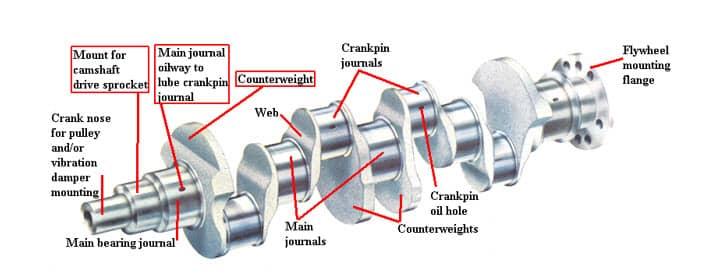 Normally, bearings allow the crank glide on a hydrodynamic film of oil between the bearing surface and journal. So as long as there is a consistent flow of clean oil moving its way into the gap between the bearing and journal, everything should be okay. The film only needs to be around a few microns thick to be enough to provide sufficient protection. However, if there is a sudden drop in oil pressure and flow at high RPM’s, the protective film can almost vanish suddenly. If that is the case then you will get a metal-to-metal contact between the bearing and journal surfaces, equating to scuffing and an increase in friction and heat.
Normally, bearings allow the crank glide on a hydrodynamic film of oil between the bearing surface and journal. So as long as there is a consistent flow of clean oil moving its way into the gap between the bearing and journal, everything should be okay. The film only needs to be around a few microns thick to be enough to provide sufficient protection. However, if there is a sudden drop in oil pressure and flow at high RPM’s, the protective film can almost vanish suddenly. If that is the case then you will get a metal-to-metal contact between the bearing and journal surfaces, equating to scuffing and an increase in friction and heat.
Again, this problem is not exclusive to any sort of engine or bearing, be it aluminum or a Babbitt – facd tri – metal, because fact of the matter is all types will begin to melt when reaching temperatures around 450°F or so. But not all hope is lost…a Babbitt overlay on a tri – metal bearing will provide a good amount of seizure resistance. Yet, if there is a good amount of scuffing, friction and heat from a lack of lubricant, the bearing will melt, smear and stick to the crank journal. Yes, meaning the dreaded spun bearing along with whatever else it decides to damage.
All this happening may indeed deem sudden to you, but often it is due to an ongoing lubrication issue that had caused a bearing to scuff, run hot and overheat. These can discolor a crank journal and blacken the big end of the rod. So, on the occasion your delving into an engine and see signs of overheating, it’s a good indication that the engine has an oiling problem which needs to be identified and addressed as soon as possible.
Here are some factors that can lead to oil pressure and lubrication problems:
- Low oil level in the oil pan due to leaks, maintenance neglect and/or improper filling.
- Oil pump cavitation and aeration at high RPM’s due to the design of the pump, restrictions in the pump inlet tube or pickup, or oil sloshing away from the pickup in the bottom of the pan due to extreme cornering, acceleration or braking forces.
- Blocked or partially blocked oil galley or oil filter.
- Improperly installed bearings (oil holes do not line up with the gallery holes). This is important to note with cam bearings that can be easily misaligned.
- Bearing clearances too tight for the oil viscosity being used. Later model engines like the Chevy LS or Ford modular V8 with tighter main and rod bearing clearances of .0015˝ to .002˝ will typically require a thin multi-viscosity motor oil such as 5W-20. Fill the crankcase with a relatively thick racing oil and I’m afraid to say you’ll have problems right from the get-go. Tighter bearing clearances require thinner oils while looser bearing clearances of .003˝ to .004˝ in older motors and race motors require thicker oils (20W-50 or 50W) to savor the protective oil film between the bearings and their journals.
- Misalignment of the bearing shell and crank journal.
- Mistakes made when machining housing bores or crank journals (incorrect diameters).
- Cold starts, especially in close tolerance racing engines that are running thicker oils.
- Very high bearing-to-crank loads due to lugging, detonation or high boost or nitrous applications.
Crush Fit
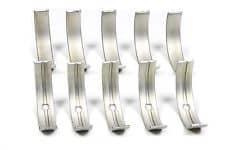 If you’re looking for something that will help to hold the bearings tightly in position to avoid the hassle of a spun bearing, is crush fit (or press fit for cam bearings). Crush fit is also beneficial as it promotes a better heat transfer between the bearing and its housing deterring the bearings from overheating.
If you’re looking for something that will help to hold the bearings tightly in position to avoid the hassle of a spun bearing, is crush fit (or press fit for cam bearings). Crush fit is also beneficial as it promotes a better heat transfer between the bearing and its housing deterring the bearings from overheating.
The amount of crush fit you may need does vary depending on the application but it’s generally within the .002” to .004” total. According to one supplier of bearings, around .003 will suffice for the majority of vehicles.
The actual amount of crush fit that comes with a bearing applied by the manufacturer is usually based on their engineering analysis of the respective vehicle along with the OEM main bore, connecting rod and cam bearing specifications. The bearing shells are then designed to stand proud above the parting line. When the main cap, rod cap or cam bearing is tightened down, the bearing compresses slightly in order to hold it securely in place. The small locating lugs on the bearing exist only for alignment purposes, therefore not playing a role to hold the bearing securely within its housing.
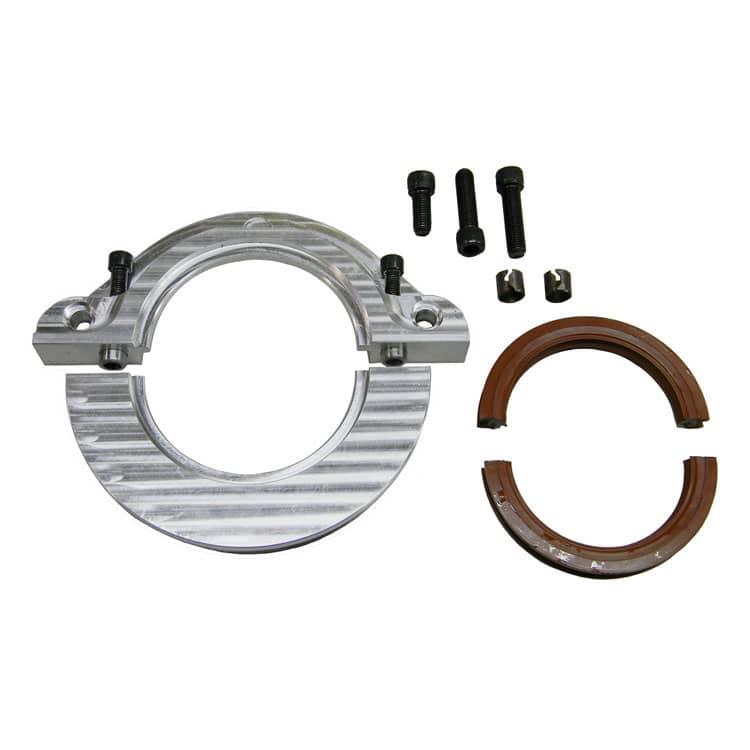 It can be tricky to check crush fit, and most bearing manufacturers claim that it can’t accurately be measured on a work bench or in the field. When you place the half shell of a bearing in a main bore, main cap, connecting rod or rod cap, both ends of the bearing will be a small bit proud than the parting line of the housing cap where they are situated. Utilizing a feeler gauge to measure how far the ends of the bearing are beyond the surface won’t actually give you a very accurate reading of crush fit due to the fact the bearing has a certain amount of built-in spread that will warp as the bearing is tightened in its housing.
It can be tricky to check crush fit, and most bearing manufacturers claim that it can’t accurately be measured on a work bench or in the field. When you place the half shell of a bearing in a main bore, main cap, connecting rod or rod cap, both ends of the bearing will be a small bit proud than the parting line of the housing cap where they are situated. Utilizing a feeler gauge to measure how far the ends of the bearing are beyond the surface won’t actually give you a very accurate reading of crush fit due to the fact the bearing has a certain amount of built-in spread that will warp as the bearing is tightened in its housing.
One way to accurately determine the crush fit, bearing manufacturers can use a block gauge to measure the bearing post instalment with a known size the cap has been torqued down to specifications. If crush fit proves to be correct, the bearing will be held tightly in its place without too much warp that could cause any sort of clearance problem.
As you may have guessed due to the number of small measurements and tricky determination of the correct amount of crush fit, it has to be pretty spot on because too much could warp the bearing to such an extent that it grinds against its journal. On the other hand, too little crush fit means the bearing will be considered loose and could shift back and forth within its housing. This could then increase the risk of it spinning or seizing. Not enough crush fit could also cause the bearing to run hot due to inadequate heat transfer between the back of the bearing and its housing. Over time, this could mean the bearing will degrade and fail.
Another factor to worry about when it comes to crush fit is the factor of thermal expansion. Aluminum blocks and rods expand more so than their cast iron counterparts. An aluminum housing bore for example with a diameter of 2.25” will expand by around .003” over 200°F temperature change, opposed to steel that will only increase by about .0015”. consequently, if a bearing falls short of enough crush fit, the bearing could come loose when the engine gets hot, again increasing the risk of spinning.
Here are some causes of insufficient crush fit:
- The use of incorrectly sized or smaller OD bearings than the housing.
- Insufficient or incorrect tightening of the main bearing cap bolts or rod bolts during the installation phase.
- Rod bolt stretch – especially at higher RPM in a race engine.
- Burred, dirty or damaged rod or main caps that preventing correct assembly and loading of the bearing.
- Housing bore is not within specifications (too large to hold the bearing shells securely).
Reducing the risk
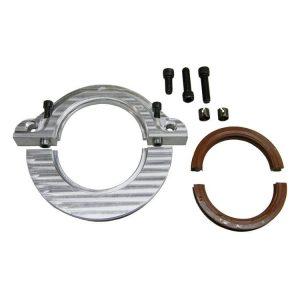 If an engine has succumbed to a spun rod or main bearing this will require a resurfacing of the crank journal, maybe re-matching the main bore or big end rod bore (or replacing the rod) depending on the amount of damage achieved. Do note, this is only if the engine can be rebuilt. The replacement bearings will usually have to be correctly sized to make up for any changes in the diameter of the bore in order for them to fit properly when they are installed. It is advisable to also get new main and/or rod bolts. Also, do not go using already used torque to yield bolts as they actually stretch when they are tightened meaning you run the risk of breaking them if you plan to reuse them.
If an engine has succumbed to a spun rod or main bearing this will require a resurfacing of the crank journal, maybe re-matching the main bore or big end rod bore (or replacing the rod) depending on the amount of damage achieved. Do note, this is only if the engine can be rebuilt. The replacement bearings will usually have to be correctly sized to make up for any changes in the diameter of the bore in order for them to fit properly when they are installed. It is advisable to also get new main and/or rod bolts. Also, do not go using already used torque to yield bolts as they actually stretch when they are tightened meaning you run the risk of breaking them if you plan to reuse them.
It’s a good idea to follow some basic assemble rules of thumb, for instance pre-lubing the front of the bearings with assembly lube or oil and assuring the backs of the bearing shells are clean and free of moisture.
If you are building a race motor, then I’m assuming your fairly clued up about this but just in case, use performance bearings. Race bearings consist of tougher materials that will be able to endure higher loads, and they have more eccentricity to aid the oil wedge that provides hydrodynamic lubrication, especially at higher engine speeds.
It is also wise to make sure your engine has no oiling issues and is worthy of achieving and maintaining a good amount of oil pressure. Just to be safe, check the oil pump for wear and tear, damage or excessive clearances and replace if it’s not worthy. Make sure the oil pump pickup tube is tightly in place and the pick-up screen is unobstructed and placed at the correct height above the bottom of the oil pan. Again, you may know this but no harm in reminding, if you’re building a race motor, do ensure the oil pump can provide the oil flow needed by the engine at high RPM’s. Make sure the oil pan is filled with the proper amount needed and viscosity of oil before you turn on the engine. Also, make sure the engine if getting sufficient oil pressure once up and running.
Coated bearings
There seem to be varying opinions as to whether coated engine bearing can help prevent or reduce the chances of spun bearings. Anti-friction coatings will indeed help stop any metal-to-metal contact in engines that are subject to frequent stop/start cycles. Small displacement engines are also known to be pretty tough on bearings, hence why coated bearings can be seen utilized in these smaller applications. Some suppliers who offer their customers a special anti-friction and anti-wear coatings say that bearing life can be extended a lot with the use of these coatings.
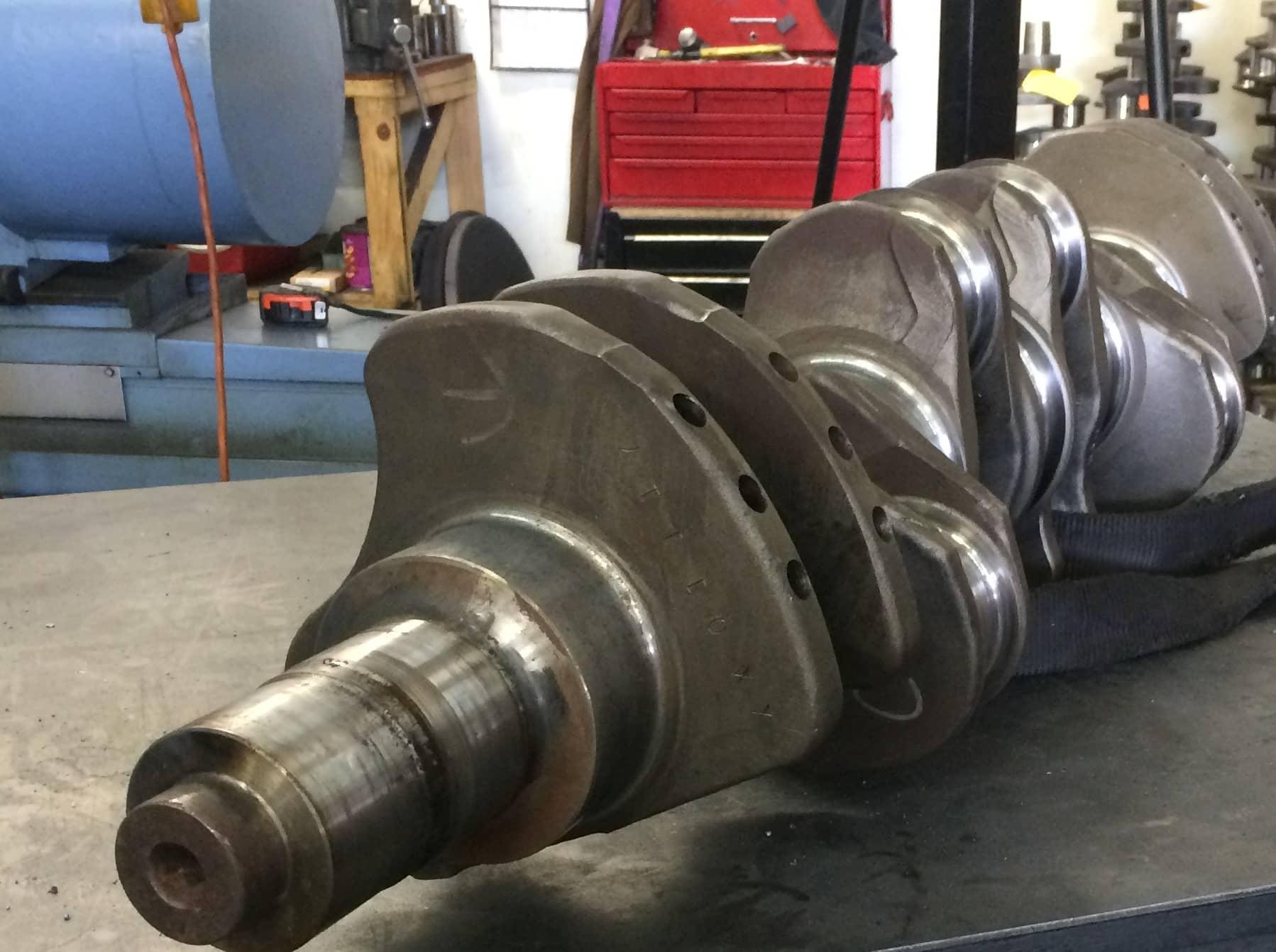 However, in a performance motor, a coated bearing isn’t really a necessity but may add some additional protection against dry starts along with metal-to-metal contact in case of a drop in oil pressure during a race or what not. In that instance, the coating would act as a temporary replacement for the oil film that is no longer there. Acting as a martyr, it will hopefully prevent any scuffing, seizing and spinning of the bearing, how long this will be effective nobody knows so best to avoid it.
However, in a performance motor, a coated bearing isn’t really a necessity but may add some additional protection against dry starts along with metal-to-metal contact in case of a drop in oil pressure during a race or what not. In that instance, the coating would act as a temporary replacement for the oil film that is no longer there. Acting as a martyr, it will hopefully prevent any scuffing, seizing and spinning of the bearing, how long this will be effective nobody knows so best to avoid it.
Under racing conditions however, a single coating alone is not to be considered a reliable substitute for oil and will eventually succumb to the conditions its placed under. It could only take a couple seconds or a couple minutes, but eventually it will cease to provide you with any protection. However, if the driver knows of the problem for instance a blown oil line spraying oil and a zero oil pressure reading on the oil gauge, he/she may act with haste and cut off the engine before any real damage can be done like the engine blowing. In such a situation, the extra bit of cash spent on a set of coated bearings would be a small price to pay as opposed to a seriously damaged engine.
What happens if this happens while you are driving?
One online poster said he had one seize in his old ’52 pickup. The man explained how he first noticed a slight drop in power followed by a rapid climb in coolant temp. The man described the experience as pretty scary due to the fact one seized bearing can become so hot it causes the coolant temp to climb. Upon inspection he also found molten bits of bearing material in the oil pan. Luckily, the engine was ok and he wasn’t far from his home so there was a short amount of time the bearing had to cause any damage.
Another man says his experience with a spun bearing resulted in an immediate loud rod knock followed by a rapid decrease in oil pressure. He then says how an engine is on borrow time after this, usually less than 50 miles before it throws the rod.
Is much salvageable if this happens?
- Unless it is a main bearing that has spun, the block is usually salvageable after very thorough cleaning. The rods that did not spin are also salvageable. Yet, any rods that did spin are trash.
- All bearings: rods, mains, cam are goners. The process leading up to the bearing welding itself to the crank sent metal filings downstream in the oil.
- The crank is also now trash. You will usually see a rainbow discoloration around the area of the spun bearing, that’s your new heat treatment and it means the metallurgical structure of the crank is now officially toast.
If you’re wanting to fix this yourself as you have already “been through it once” meaning you yourself built it, that’s your indicator to have a knowledgeable builder do it next time. Probably tossed in a set of bearings without use of a micro meter, set the clearance way too tight, and oil flow was nixed.
